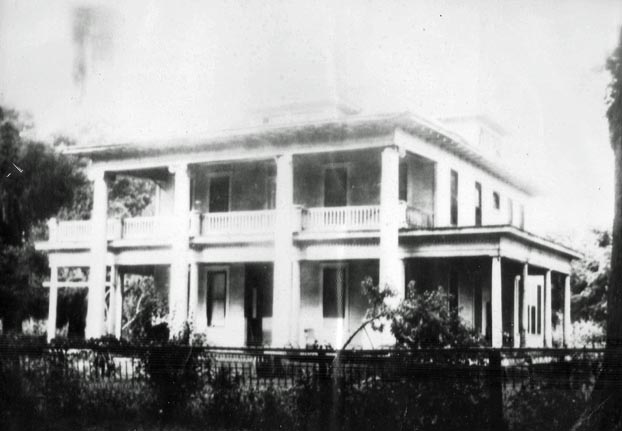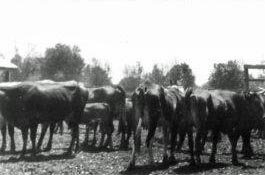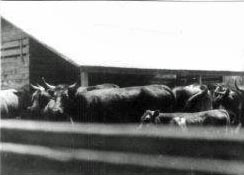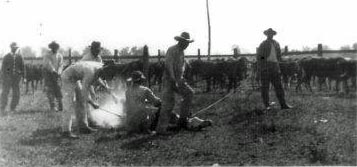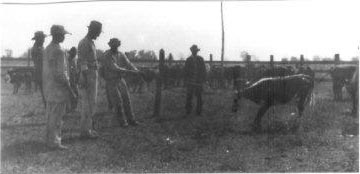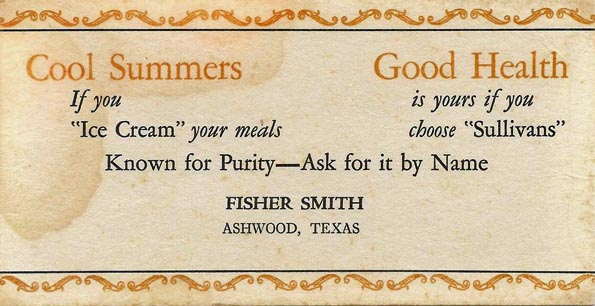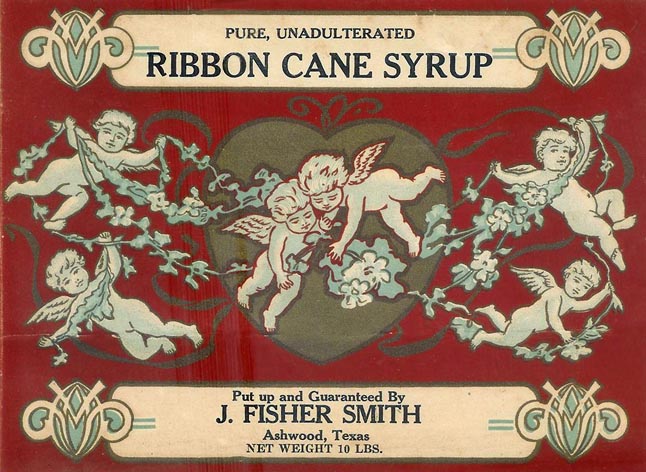|
|
||||
|
Charles Leroy was a very hard working young man with a lot of ambition which helped him later to become successful in the business world. At a very young age he went to work for a lumber company. He was paid by script each week. He did not know what "script" was, but he saved these pieces of paper until finally, after two years, someone enlightened him by telling him that the script was "money." By this time, he had saved quite a bit of money. Charles Leroy married Miss Belzoria Gallaspie of Almadene, Louisiana. They had twelve children, six of whom died of various childhood diseases. Mr. Smith began his business career as a logging and timber contractor. His success enabled him to establish one of the best equipped and modern lumber mills in the State of Louisiana. He was President of C. L. Smith Oil Company, Gray Oil Company, Independent Oil and Gas Company and director in several banking institutions. Through a local bank, Charles learned of some undeveloped land in Texas. Always looking for a good investment, he decided to go check it out. In 1909, he came to Texas with his two sons, John Fisher and J. Kilbrain, and liked what he saw. He bought extensive farming land which included 6,612 acres in Matagorda County, 1,700 acres in Brazoria County and 42,000 acres of Louisiana marsh land five miles from Port Arthur on the Sabine River. He purchased this May 16, 1910. The 6,612 acres of land that Mr. Smith purchased in Matagorda County is located on a branch of the Southern Pacific Railroad between Wharton and Bay City and has an elevation of seventy-two feet. When this land was purchased, there was only a railroad track with a side track for thirty railroad cars. This was called the "Switch."
The John Fisher Plantation home has 2,800 square feet which includes porches across the front, upstairs and down, and also L-shaped porches at the back of the house. Downstairs has a formal parlor, an entry hall, a sitting room, a dining room, a large walk in pantry and a kitchen. The upstairs has three bedrooms and a bathroom. Originally, all rooms were used for bedrooms with the exception of the kitchen. The porches were also used for sleeping areas. The Smith children on occasion would awaken with snow covering their bedding. Various shrubs and trees were brought from Louisiana to landscape their new home. The cypress tree planted by the creek is still standing [1986]. Mr. Smith wanted to name this community he had created "Smithville," but there was already a Smithville in Texas. He then decided that "Ashwood" would be the proper name for his community since there were three producing sawmills in the area owned by the Hubbard, Collins and Street families. Fine ash logs were cut and shipped to manufacturers throughout the state of Texas. On January 2, 1911, Mr. Smith and his two sons sent for the rest of their families to come live on the Texas plantation in Ashwood. This included Charles Leroy's wife, Belzoria, and their three daughters, Bessie, Ethel and Geraldine. John Fisher's wife, Annie M., their four-year-old daughter, May Bell and their seven-month-old son, C. L. came as well. They all lived in the two-story, ten-room "Louisiana-style" home. There was no electricity and no gas. They did have running water in the house from an artesian well. A large reservoir on the side of the cook stove kept water hot for baths and dishwashing. There was one fireplace. The plantation home was the hub of the community. Charles Leroy traveled extensively due to his other business interests. Therefore he gave John Fisher complete power of attorney over all operations at Ashwood. A general merchandise store was built next to the house and was well stocked with hardware items, groceries, clothing, shoes, farm implements, seeds, etc. On one side of the store was an express office and on the other side was the post office. Mittie D. Hanson, daughter of the only other white family living in the area at the time, was postmistress from September 1910 until 1916. Mrs. Annie M. Smith was appointed as postmistress of Ashwood in 1916. Her eldest daughter, May Bell, was her assistant.
After moving to Texas, Annie M. Smith gave birth to three more children, Helen, Eva and John Fisher. These children were delivered by Henrietta Bogan, A Negro midwife who had been a water girl during slavery times. Just across the creek from the original John Fisher Plantation, Charles Leroy built another colonial plantation home for his wife, Belzoria, and their three younger daughters. In 1912, they decided there were enough children for a school. A small portion of land was donated. By this time, approximately ten other families had moved into the community. The school was located one-quarter mile from the plantation home. There were around fifteen children enrolled and the school teacher's name was Miss Izoria Toupes. Miss Toupes was from Bay City. She rode the train to Ashwood and boarded with Mr. and Mrs. John Fisher Smith through the week. She caught the train back to Bay City each weekend. As the community grew, the one-room school became too small and needed to be in a more central location. A larger school was built about a mile from the original school and was located by the railroad section house. The section house was occupied by Mr. Antone Hanson who was section foreman at the time. Ice for the plantation home arrived by train and was packed in straw to slow down melting. The Smith children delighted in taking ice across the bridge to their grandmother's home to make ice cream unless the water was too high in the creek. In the evening, the Smith children would sit on the front porch steps and listen to the Negroes sing in "The Run." Some of the older Negroes in the community said the plantation kitchen was built over the slave cemetery. It is not known if this is rumor or fact. A report written to Texas Bank and Trust Company on November 2, 1914 concerning some land Charles Leroy owned in the Ashwood community gives insight into the location of Ashwood and its status as of 1914. A home was built for J. Kilbrain and his wife. She was unhappy in Ashwood and they moved away from the area.
I remember clearly a one-room house with a clay chimney and fireplace under the oak tree in our pasture. An elderly colored man lived there who had served as a slave before the Civil War. I remember his hair was snow white and he was called Uncle George. Uncle George tended fifty mules and saddle horses. He also chopped and split wood for the kitchen stove and fireplace for my daddy. Ht is buried in the corner of the churchyard that was known as Mount Olive. This is located one-quarter mile from our home on the "Run Road" which was then and is now a colored community. A church existed there before 1900. It was abandoned and another built further down in the settlement. Charles Leroy Smith died on March 26, 1918. Belzoria Smith lived until January 28, 1927. John Fisher and Annie M. Smith continued to manage the Ashwood Plantation with their three daughters and two sons until John Fisher's death on June 7, 1936. The general store and post office were closed in 1952. Annie M. Smith passed away on May 13, 1969. The plantation home remained in the Smith family and was used for all family gatherings until 1984. In 1984, the Gerald David Vance family bought the plantation home from the Smith family with the intention of restoring it, while living in it, so that it will remain a part of Texas history. [Editor's note: Some years later, The Smith Plantation home was totally destroyed by fire.] The dedication for the Smith Plantation House Texas Historical Marker was held June 18, 1988. The Smith Plantation House marker is located 10 miles east of Bay City on SH 35, then 3.56 miles north on FM 1728.
SMITH PLANTATION HOUSE
CHARLES LEROY SMITH (1863-1918) WAS BORN IN MISSISSIPPI AND DEVELOPED LUMBER, OIL, AND BANKING BUSINESSES IN LOUISIANA. IN 1910 HE BOUGHT MORE THAN 6,000 ACRES HERE AND BUILT THIS HOUSE AS A HUB FOR HIS PLANTATION AND THE COMMUNITY HE NAMED ASHWOOD. THE STRUCTURE IS FRAMED WTIH PINE AND THE EXTERIOR IS CLAD WITH CYPRESS, ALL CUT AT SMITH'S MILL AT MERRYVILLE, LA. THE 2-STORY, 5 BAY FRONT WITH CENTRAL HALL AND REAR ELL DEFINES A VERY LATE EXAMPLE OF A POPULAR TEXAS CONFIGURATION.
RECORDED TEXAS HISTORIC LANDMARK--1986 |
||||
|
||||
J. Fisher Smith Working Cattle |
||||
|
||||
|
|
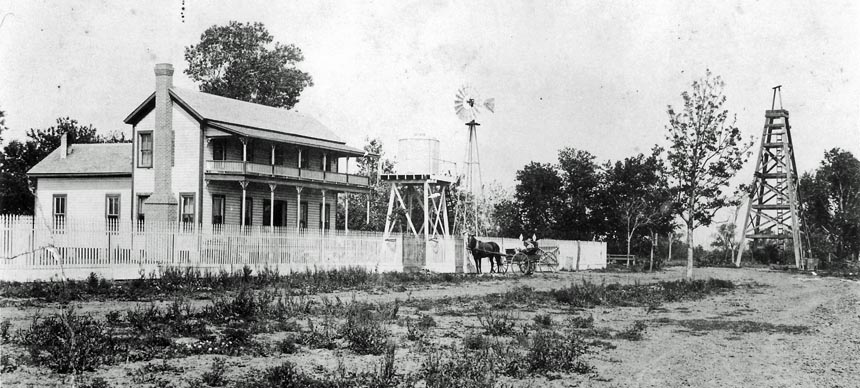
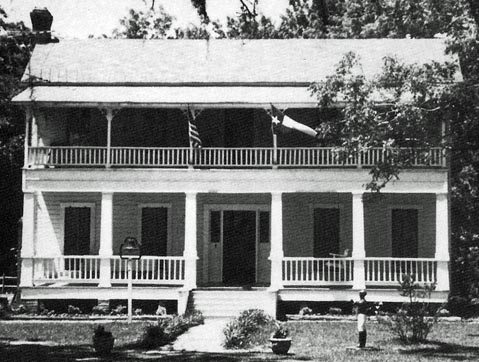 After purchasing the land in 1910, Charles Leroy
and his two sons began to clear the land for farming and to build
fences for pasturing cattle and other stock. Sixteen tenant houses
were built for hired help as well as a two-story, ten-room
plantation home for John Fisher Smith and his family. The lumber for
all the barns, sheds, tenant houses and the plantation home came
from a lumber mill in Louisiana.
After purchasing the land in 1910, Charles Leroy
and his two sons began to clear the land for farming and to build
fences for pasturing cattle and other stock. Sixteen tenant houses
were built for hired help as well as a two-story, ten-room
plantation home for John Fisher Smith and his family. The lumber for
all the barns, sheds, tenant houses and the plantation home came
from a lumber mill in Louisiana.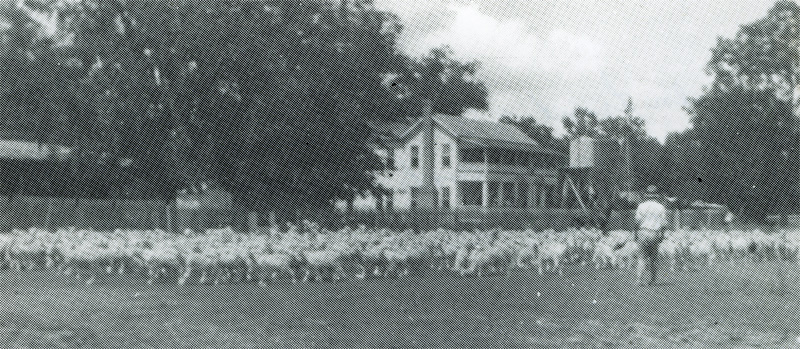
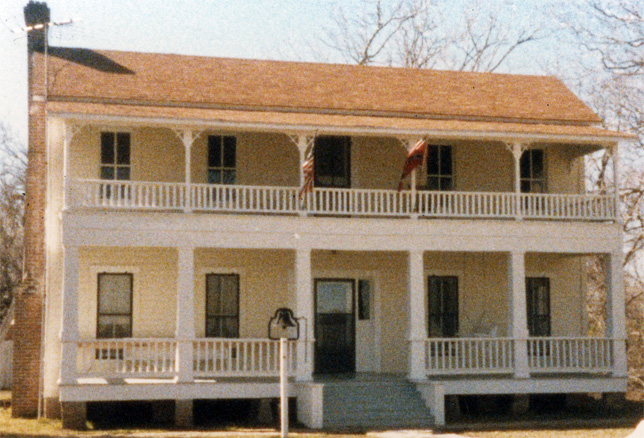 The following is a statement made by May B. Smith
Puryer about an old colored man in the Ashwood community. Mrs.
Puryer is the only member of the John Fisher family still living in
Ashwood. She and her husband have built a brick home within
"hollering" distance of the plantation home.
The following is a statement made by May B. Smith
Puryer about an old colored man in the Ashwood community. Mrs.
Puryer is the only member of the John Fisher family still living in
Ashwood. She and her husband have built a brick home within
"hollering" distance of the plantation home.